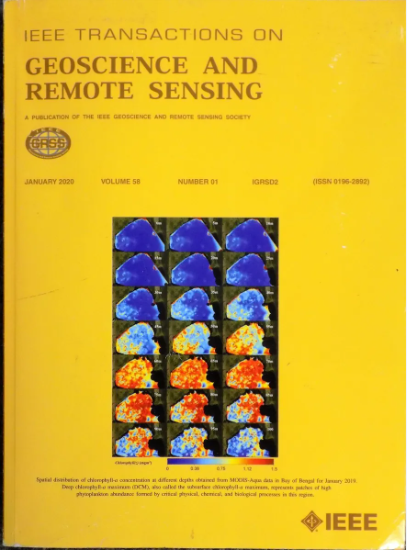Single Satellite Image Sharpening With Any-Angle 2-D MTF Estimation
IF 7.5
1区 地球科学
Q1 ENGINEERING, ELECTRICAL & ELECTRONIC
IEEE Transactions on Geoscience and Remote Sensing
Pub Date : 2024-09-11
DOI:10.1109/TGRS.2024.3457906
引用次数: 0
Abstract
Sharpening a single satellite image remains challenging due to low computational efficiency, complexity of multiparameters, unphysical modeling, and the potential for radiometric consistency loss. To address these issues, this article introduces a modulation transfer function (MTF)-based sharpening method that is fast, has a single tunable parameter, and effectively suppresses noise and over-enhancement. This article also proposes an automatic method for extracting edge objects with any angle for MTF calculation, without relying on ideal edge objects. The improved slanted-edge method is more robust against noise by incorporating the logistic function and employing the random sample consensus (RANSAC) algorithm to remove deflected edges. The new 2-D MTF estimation method provides precise and stable sharpening results. This article extends the proposed method to single image super-resolution (SISR) for satellite images. The proposed approach outperforms state-of-the-art SISR methods, including 11 deep learning-based methods, across three public datasets and raw images (water, city, and building) acquired from three satellites. The utmost correlation to the histogram of raw image proves the proposed method’s superiority in preserving radiometric information compared to other methods. In addition, the successful application of the one-time estimated 2-D MTF for raw satellite images over a year and its capability to improve edge sharpness uniformity across cameras within the sensor system further solidify the method’s universality and reliability. More comparison results and code are available at利用任意角度二维 MTF 估算进行单卫星图像锐化
由于计算效率低、多参数的复杂性、非物理建模以及潜在的辐射测量一致性损失,锐化单幅卫星图像仍然具有挑战性。为解决这些问题,本文介绍了一种基于调制传递函数(MTF)的锐化方法,该方法速度快、参数单一可调,并能有效抑制噪声和过度增强。本文还提出了一种自动方法,可提取任意角度的边缘对象进行 MTF 计算,而无需依赖理想的边缘对象。改进后的斜边方法加入了对数函数,并采用随机样本共识(RANSAC)算法去除偏转的边缘,从而对噪声具有更强的鲁棒性。新的二维 MTF 估算方法可提供精确、稳定的锐化结果。本文将提出的方法扩展到卫星图像的单图像超分辨率(SISR)。在三个公共数据集和从三颗卫星获取的原始图像(水、城市和建筑)中,所提出的方法优于最先进的 SISR 方法,包括 11 种基于深度学习的方法。与原始图像直方图的最大相关性证明,与其他方法相比,所提出的方法在保存辐射信息方面更胜一筹。此外,对原始卫星图像一次性估算出的 2-D MTF 成功应用了一年多,而且它还能改善传感器系统内各相机边缘锐度的一致性,这进一步巩固了该方法的通用性和可靠性。更多比较结果和代码请访问 https://github.com/RSingKK/Any-angle-MTF。
本文章由计算机程序翻译,如有差异,请以英文原文为准。
求助全文
约1分钟内获得全文
求助全文
来源期刊

IEEE Transactions on Geoscience and Remote Sensing
工程技术-地球化学与地球物理
CiteScore
11.50
自引率
28.00%
发文量
1912
审稿时长
4.0 months
期刊介绍:
IEEE Transactions on Geoscience and Remote Sensing (TGRS) is a monthly publication that focuses on the theory, concepts, and techniques of science and engineering as applied to sensing the land, oceans, atmosphere, and space; and the processing, interpretation, and dissemination of this information.
 求助内容:
求助内容: 应助结果提醒方式:
应助结果提醒方式:


